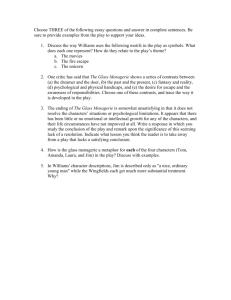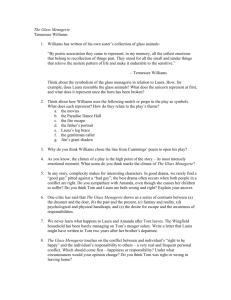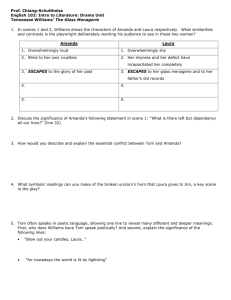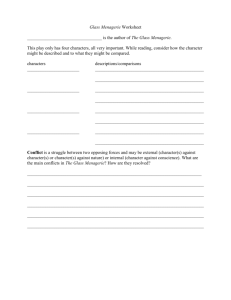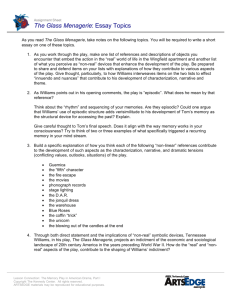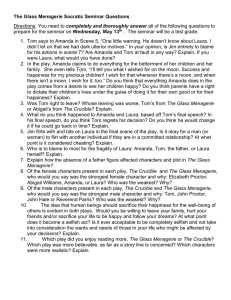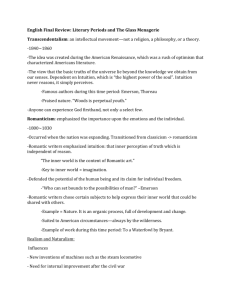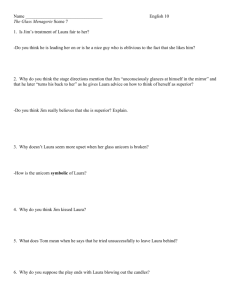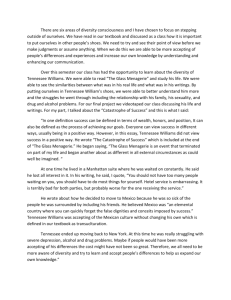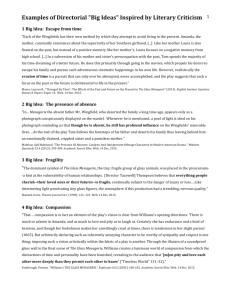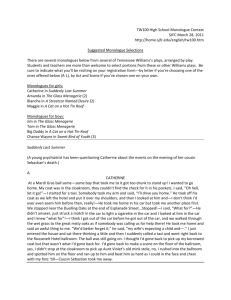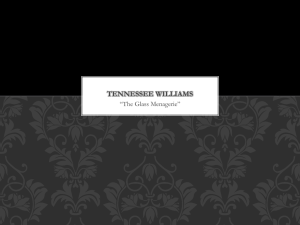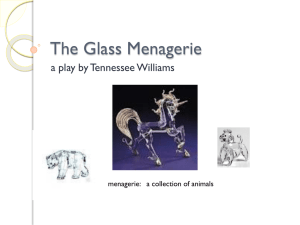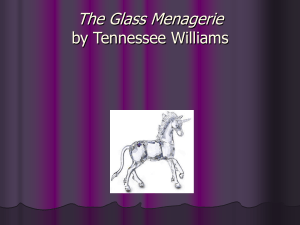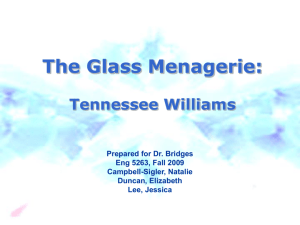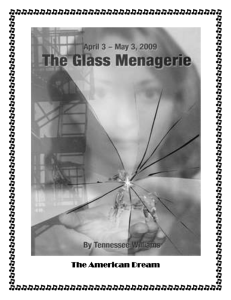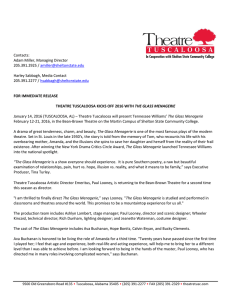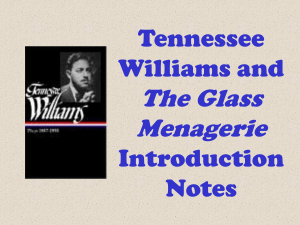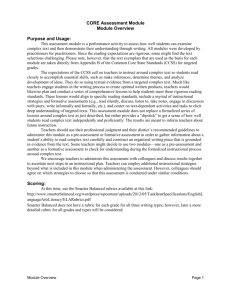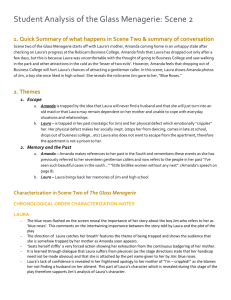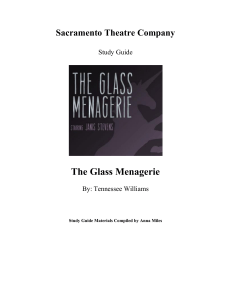The Glass Menagerie PPT
advertisement
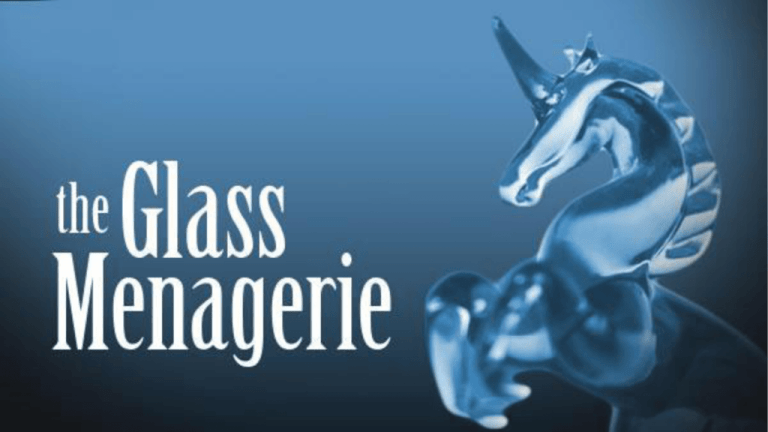
Tennessee Williams Born Thomas Lanier Williams III in Columbus, Mississippi Tennessee-nickname from college because of southern accent Father- salesman; drinker Mother- clergyman’s daughter; hysterical attacks Siblings-Rose (older) extremely close; prefrontal lobotomy; Dakin (younger) Moved a lot; 16 times/1 year Williams-shy, fragile, taunted; worked in shoe factory (nervous breakdown); college, lived Bohemian life; scriptwriter 1941 began work on The Glass Menagerie 1943 Rose underwent prefrontal lobotomy in St. Louis 1944 December 26 Playhouse Theatre Chicago, IL; 1945 March 31 NYC 1961 partner died 1967 entered psychiatric hospital 1983 died from choking in a drug-related incident The Glass Menagerie “…the saddest play I have ever written. It is full of pain. It’s painful for me to see it.” -Tennessee Williams Memory Play- “The scene is memory and is therefore nonrealistic. Memory takes a lot of poetic license. It omits some details; others are exaggerated, according to the emotional value of the articles it touches, for memory is seated predominantly in the heart. The interior is therefore rather dim and poetic.” REMINISCENES/PARALLELS of his own family: Lived in St. Louis Inhabited a rather modest apartment Tennessee (Tom) worked at shoe factory Rose (Laura) was extremely troubled Edwina Williams (Amanda) DEVIATIONS Brother Dakin lived with them Father was present after working hours PRODUCTION NOTES PLASTIC THEATER- applies expressionistically and symbolically such theatrical techniques as special setting, lighting, costume, and sound, etc., to establish mood and externalize the inner world of his characters. THE SCREEN DEVICEImages and legends, projected from behind, cast on a section of wall between the front room and the din to give ACCENT to certain VALUES in each scene. Primary point is made SIMPLY and LIGHTLY. THE MUSIC“The Glass Menagerie” resembles CIRCUS MUSIC. Used to give EMOTIONAL EMPHASIS to suitable passages. LIGHT, DELICATE, SAD. Serves as a thread of connection and allusion between the narrator With his separate time and space an the subject of his story. Primarily Laura’s music (and the fragility of glass-her image). THE LIGHTINGDIM, not realistic, keeping with atmosphere of memory. Focus is on LAURA, pristine clarity, like early religious portraits of female saints or madonnas. ITMOTIF: an associated melodic phrase or figure that accompanies the reappearance of an idea, person, or situation “structures the play; every character seeks flight, if not literally, then through the imagination.” Themes Motifs Symbols 1. Memory vs. Reality 2. Impossibility of True Escape 1. The Glass Menagerie 1. Words/Images on Screen 2. Music 3. Unrelenting Power of Memory 2. Unicorn 3. Fire Escape 4. Abandonment 4. Jim Characters AmandaTom and Laura’s mom Proud, vicious, clings to memories of vanished, genteel past Admirable, charming, pitiable, laughable Faded Southern belle Suffered reversal of economic and social fortune Defends values of the past FLAWS-tragic, comic, grotesque, extroverted, theatrical Constant nag of Tom; refusal of Laura’s true self BUT willingness to sacrifice for loved ones LauraSelfless; Axis SYMBOLS- blue roses, glass unico Entire glass menagerie Rare, delicate, peculiar FOIL CHARACTER for Amanda TomNarrator of the play; recollects and acts Objective truth and memory’s distortion of the truth Reads literature, writes poetry, dreams of escape and adventure BUT bound to the Wingfield house Loves Amanda and Laura BUT indifferent and cruel to them LITERARY DEVICES Annotations 1. Themes 2. Motifs 3. Symbols 4. Setting 5. Characterization 6. Irony 7. Mood/tone 8. Diction 9. Metaphors 10.Similes 11.Comparisons/contrasts
